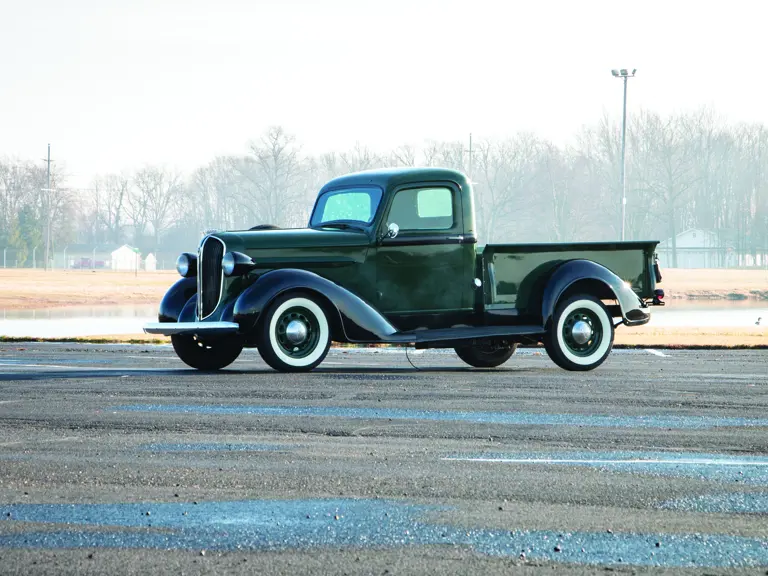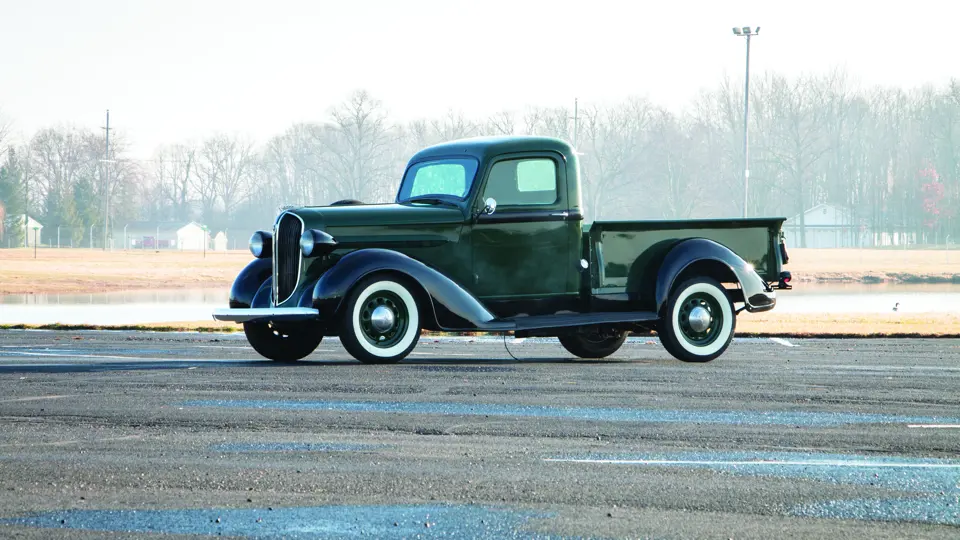Plymouth entered the light-duty truck market in 1937 with four body styles built on a truck chassis shared with Dodge. Labelled the PT series (for Plymouth Truck), body types included the Express (pickup, like this vehicle), a cab-and-chassis (with full-length running boards and rear fenders), Commercial Sedan (sedan delivery), and wood body station wagon. The panel delivery would remain on the truck chassis for two years, the wagon for just one.
The reasons for Plymouth entering the light-duty truck market were simple. Every Plymouth dealer in both the United States and Canada was paired with another product from Chrysler. Dodge/Plymouth dealers had a commercial vehicle, but those dealers paired with DeSoto or Chrysler were left without an alternative to offer prospective buyers. It must have seemed like a perfect solution for little investment; Chrysler Corporation could duplicate the Dodge pickup and sell it under the Plymouth brand.
With a strong economic climate (1937 would be a banner year for Plymouth, setting sales records that stood until 1950), timing was perfect to enter the light-duty truck market.
The Plymouth PT57 came with a 201.3-cid, 70-hp inline, L-head six-cylinder engine that is backed by a floor-shift manual transmission. This 1/2-ton pickup appears to be freshly restored in a very nice manner and the odometer indicates only .6 miles driven. Finished in two-tone green over black with a black belt molding and has great styling cues in the form of bullet-shaped headlights, side-mounted spare, artillery-style wheels, wide whitewall tires, driver’s sideview mirror and skirted fenders. The shapely Plymouth grille was also seen on the Plymouth passenger cars of the 1937 model year, although there was no interchanging of sheetmetal between the two.
The popularity of pickups continues to expand to this day. It is always rewarding to see these vintage workhorses still on the road; especially when the care this one has received is so evident.



 | Auburn, Indiana
| Auburn, Indiana


